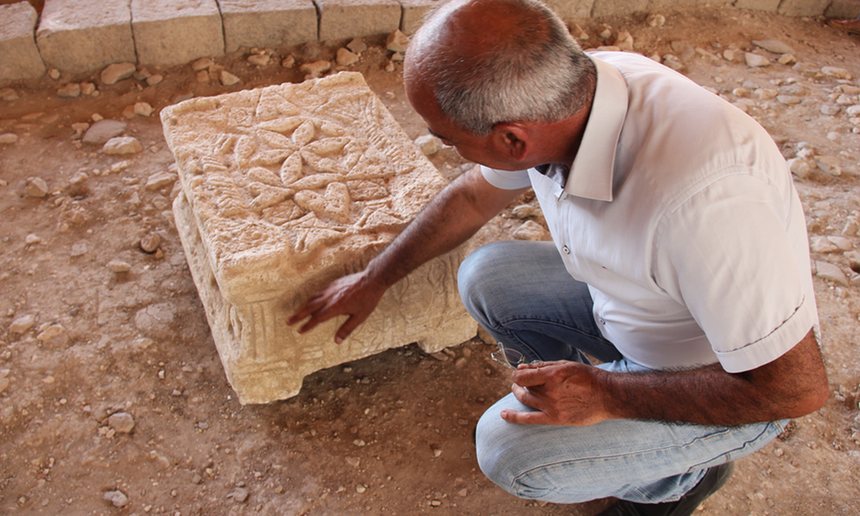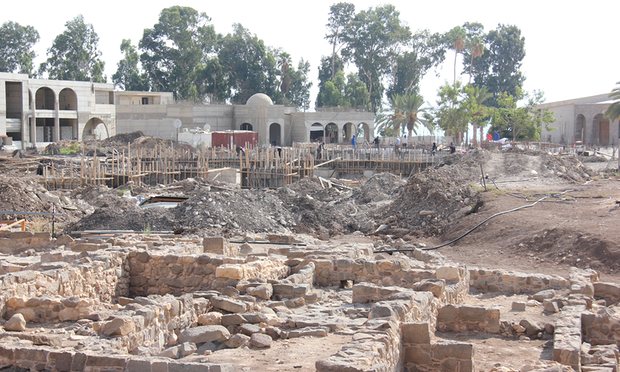Mary Magdalene and the Search for Redemption on the Sea of Galilee
By Giles Fraser
The Legion of Christ was founded in Mexico in 1941 by the Vatican’s favourite fundraiser, Father Marcial Maciel. A friend of Pope John Paul II, in his time he made millions of dollars for the Roman Catholic church and recruited thousands of young men into the priesthood. He was feted by wealthy Mexican widows and the neocon right. But that was before he was outed as a serial abuser of children and young men and discovered to have fathered at least three children with two women, whom he kept in luxury apartments in different countries. He embezzled funds. He was a drug addict. He was even accused of abusing his own children. As he was considered too old for a trial, the Vatican quietly retired him to Florida in 2006. He died two years later. But the order he founded struggled on, under new leadership. The year after Maciel died, a digger on a construction site in the Galilee region hit something solid in the ground. The Legion of Christ had bought the site for $16m in order to build a hotel and retreat centre on the northern shore of the Sea of Galilee – a freshwater paradise of fish and fruit blighted by occasional earthquakes and a long history of terrible politics. Jesus was born and died in the Jerusalem area. But the location for most of his adult ministry was Capernaum in Galilee, just up the road from the construction site. For Christian pilgrims, this tiny area has long been the perfect location for a “Jesus experience”. But when experts from the Israeli Antiquities Authority arrived, what they found was the first-century town of Magdala, complete with an extremely rare first-century synagogue. Destroyed by the Romans after the Jewish rebellion some time around AD67, the Magdala synagogue (unlike that in Capernaum) was not overbuilt and so provides a fascinating portal to the world in which Jesus lived and taught. Arfan Najar, the Muslim archeologist who made the original find, showed me around. Still being excavated, this is the important new stop on the pilgrim tour of the Galilee. And scholars are excited at the evidence of how provincial religious life developed for those who were too far away from the Jerusalem temple to visit it regularly. Here, the local synagogue was a hybrid of community hall and teaching space, more a venue to debate the Torah than a quiet place of pious reflection. It was in this argumentative atmosphere that Jesus’s theology developed.
But Magdala was also the hometown of Mary Magdalene, a follower of Jesus and witness to his death and resurrection. She has been depicted since the early middle ages as a repentant prostitute and even Jesus’s lover or wife, none of which has any basis in the Bible or other historical sources. But as a powerful, single woman in a man’s world, the idea that she was a prostitute has been hard to shake off, despite increasing efforts. This summer Pope Francis elevated Saint Mary Magdalene to the same level of importance as the apostles. She wasn’t a prostitute. She was an early church leader, “the apostle to the apostles” as Thomas Aquinas called her. So this is how the Legion of Christ, of all organisations, came to be the custodian of the home town of Mary Magdalene, someone increasingly regarded as the standard bearer for women’s developing role in the Catholic church, and even, for some, for women’s ordination. And it is unsurprising that the organisation has struggled to get it right. In a pamphlet entitled Magdala: God Really Loves Women, the current director of Magdala, Father Juan Solana, compared Mary to Marciel himself. They were both people, he wrote, who understood what it was like to be at the centre of a scandal. Father Maciel’s initials “are also MM, just like Mary Magdalene”. And, he went on: “We should be quieter and less condemning.” Solana subsequently apologised and withdrew the pamphlet. But these do not feel like the words of an organisation that has learned its lesson from the scandal that engulfed it. Two thousand years on, and the struggle for redemption continues on the shores of the Sea of Galilee.
|
.
Any original material on these pages is copyright © BishopAccountability.org 2004. Reproduce freely with attribution.

